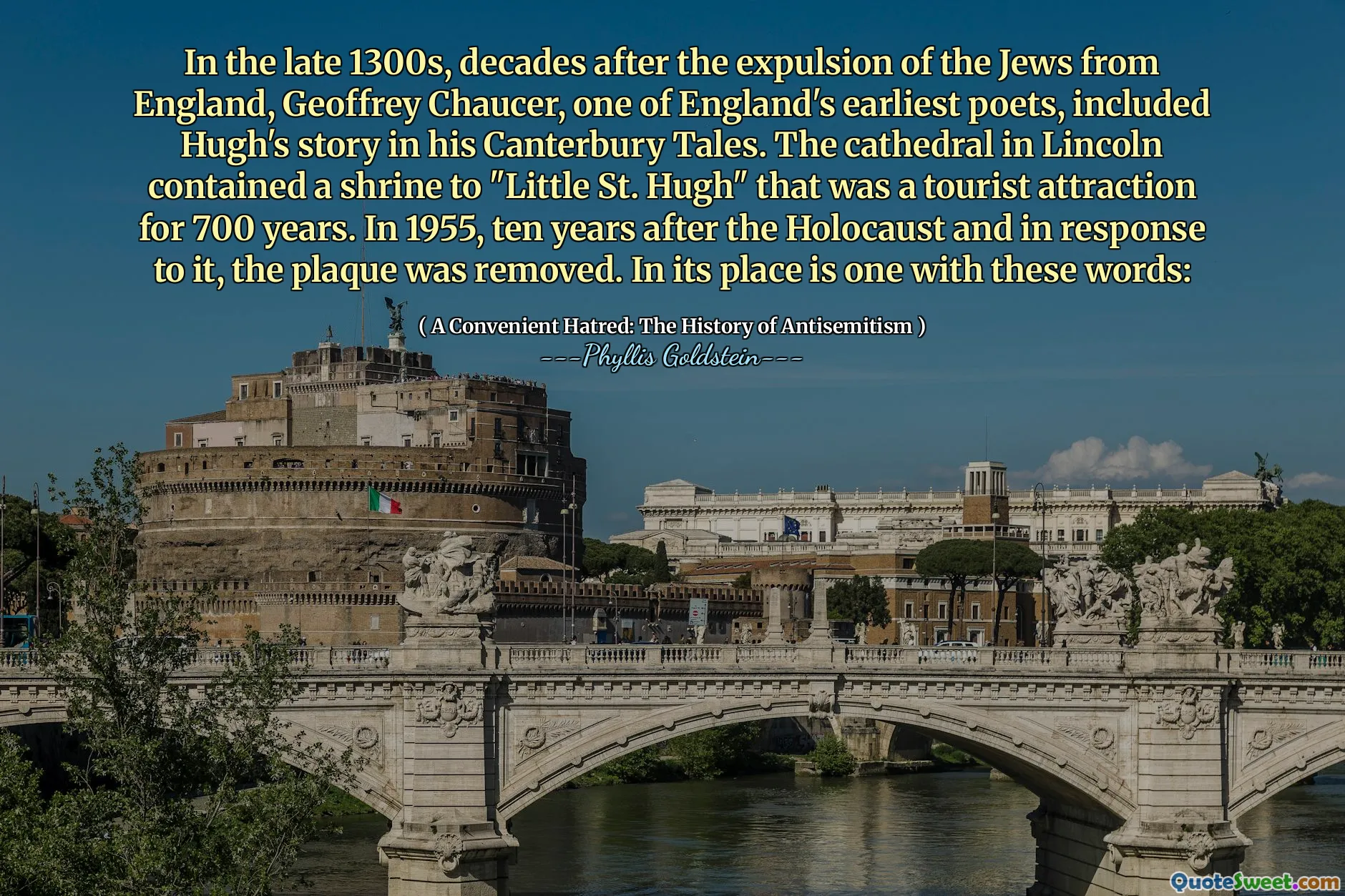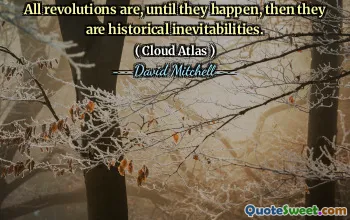
In the late 1300s, decades after the expulsion of the Jews from England, Geoffrey Chaucer, one of England's earliest poets, included Hugh's story in his Canterbury Tales. The cathedral in Lincoln contained a shrine to "Little St. Hugh" that was a tourist attraction for 700 years. In 1955, ten years after the Holocaust and in response to it, the plaque was removed. In its place is one with these words:
This excerpt highlights a profound chapter in the history of antisemitism and its long-lasting impacts. The inclusion of Hugh's story by Chaucer signifies how ingrained these narratives were in medieval culture, often reflecting either curiosity, superstition, or prejudice. The shrine dedicated to "Little St. Hugh" in Lincoln Cathedral served as a physical symbol of these beliefs, attracting pilgrims for centuries. Such memorials contribute to the collective memory, embedding legends and historical events into public consciousness—sometimes perpetuating myths and hostility. The removal of the plaque in 1955, following the atrocities of the Holocaust, marks a conscious effort to confront and repudiate past antisemitic sentiments. It demonstrates society’s recognition of the importance of reflecting on historical biases and preventing the perpetuation of hatred. This act of removal is not just about erasing symbolism but also about acknowledging the pain inflicted and educating future generations to foster understanding and tolerance. The period after the Holocaust was pivotal in re-evaluating historical narratives and confronting antisemitic myths that persisted for centuries. It reminds us that cultural artifacts and stories have powerful roles—they can either uphold prejudice or serve as tools for remembrance and reconciliation. The decision to replace the plaque with words of reflection indicates a commitment to learning from history, ensuring that such prejudice does not continue unchecked. This excerpt underscores how collective memory and activism are essential in shaping societies free of hate, emphasizing the importance of ongoing vigilance and education in combating antisemitism.






